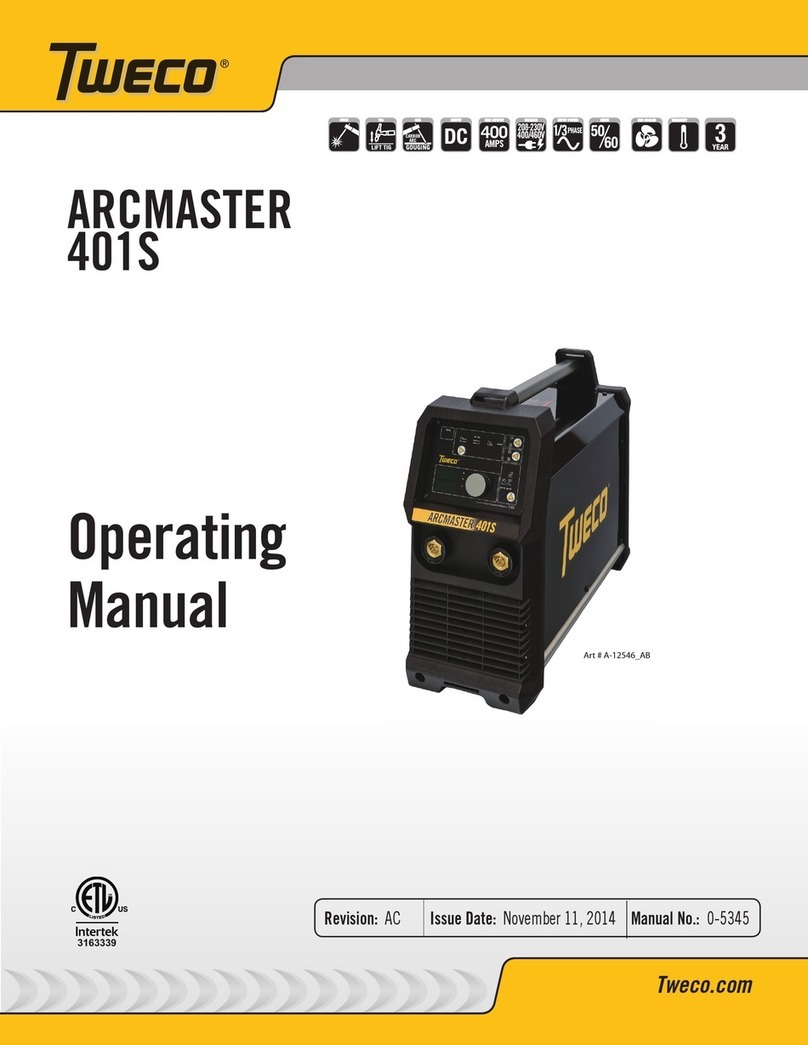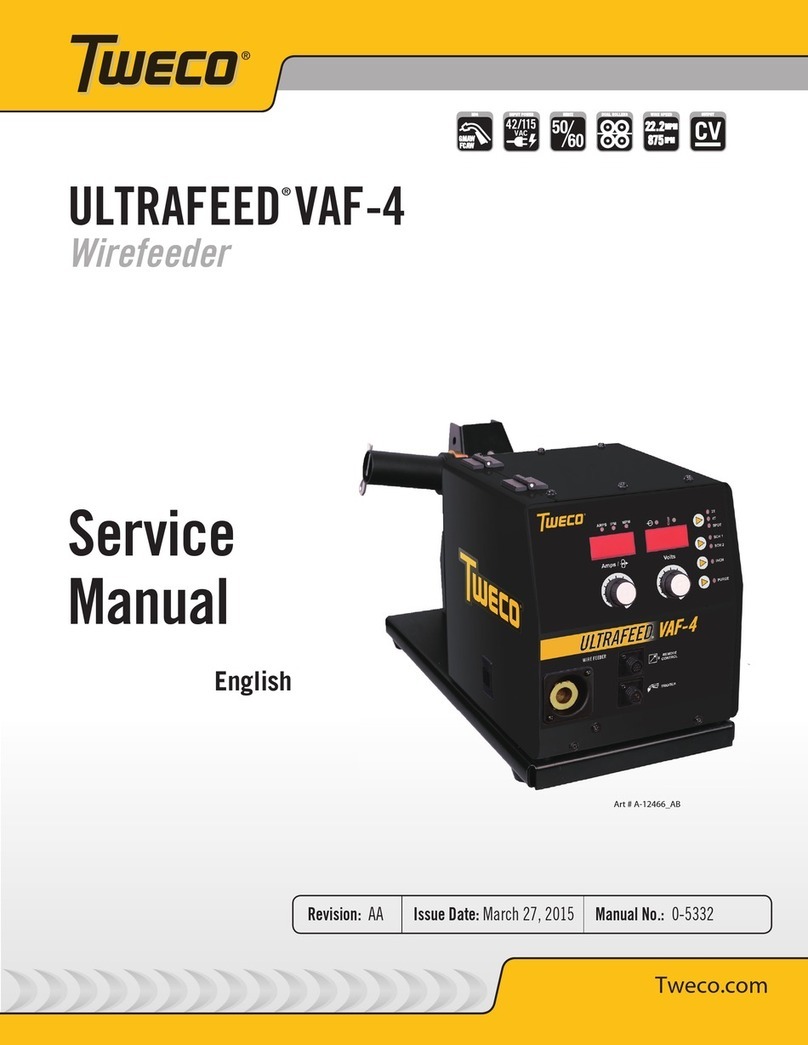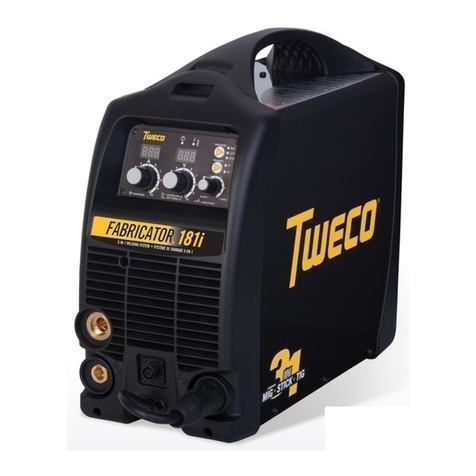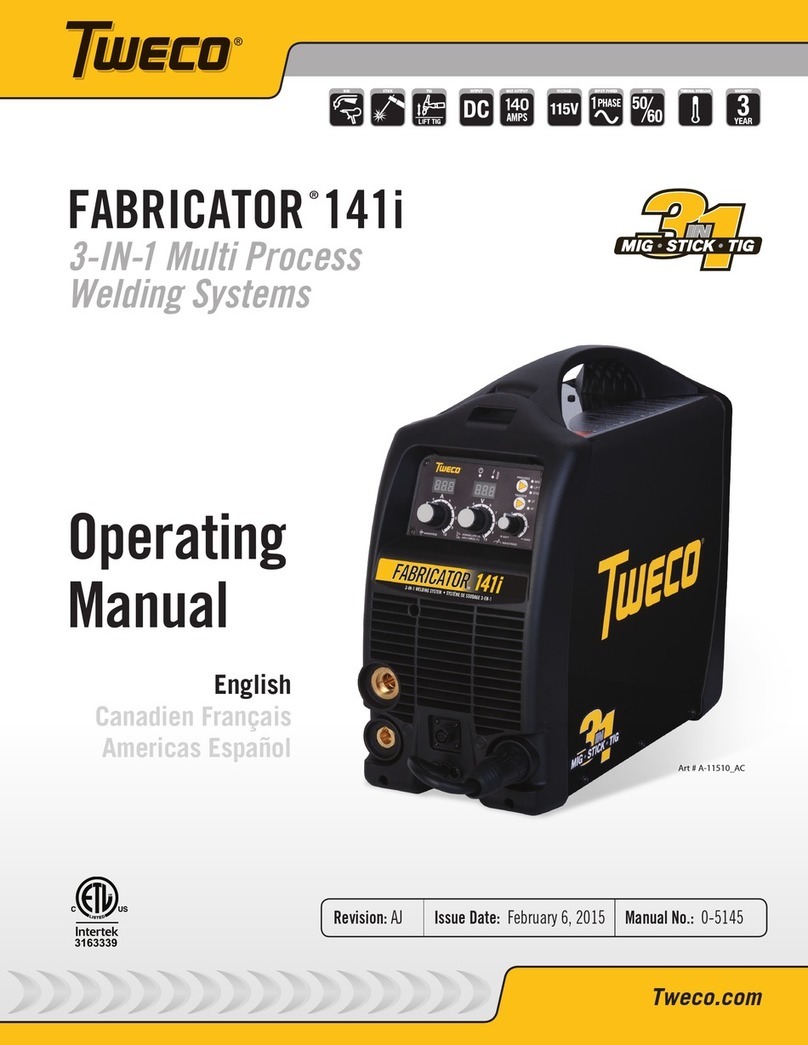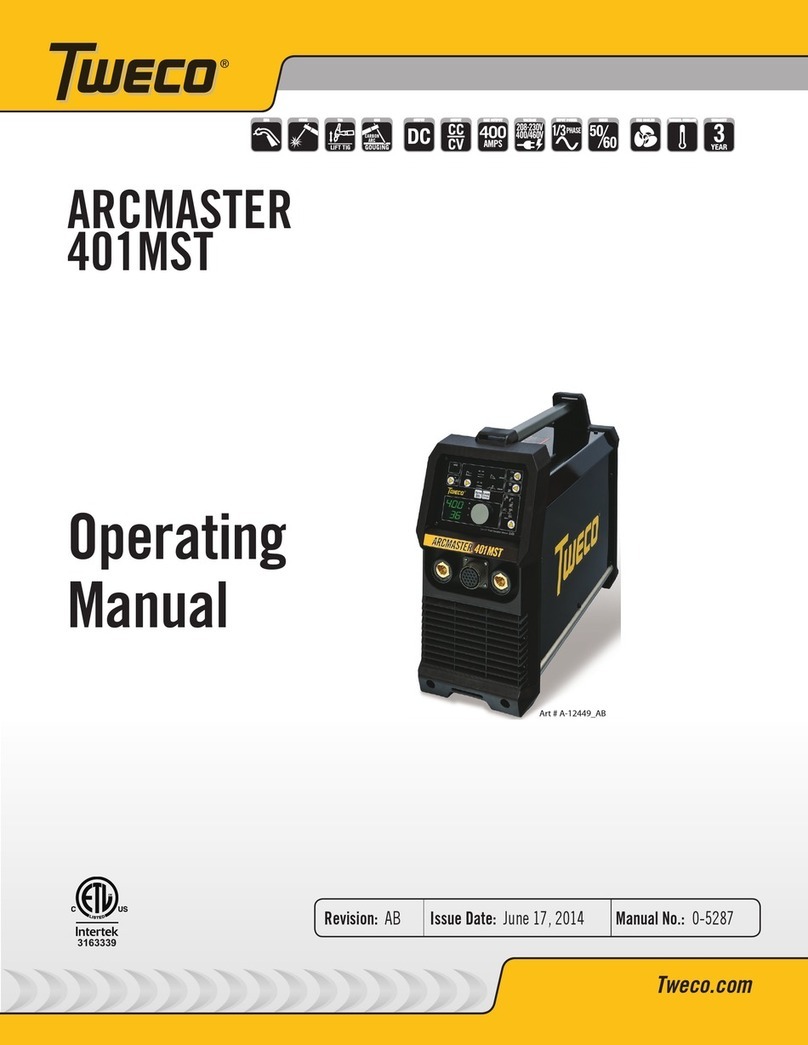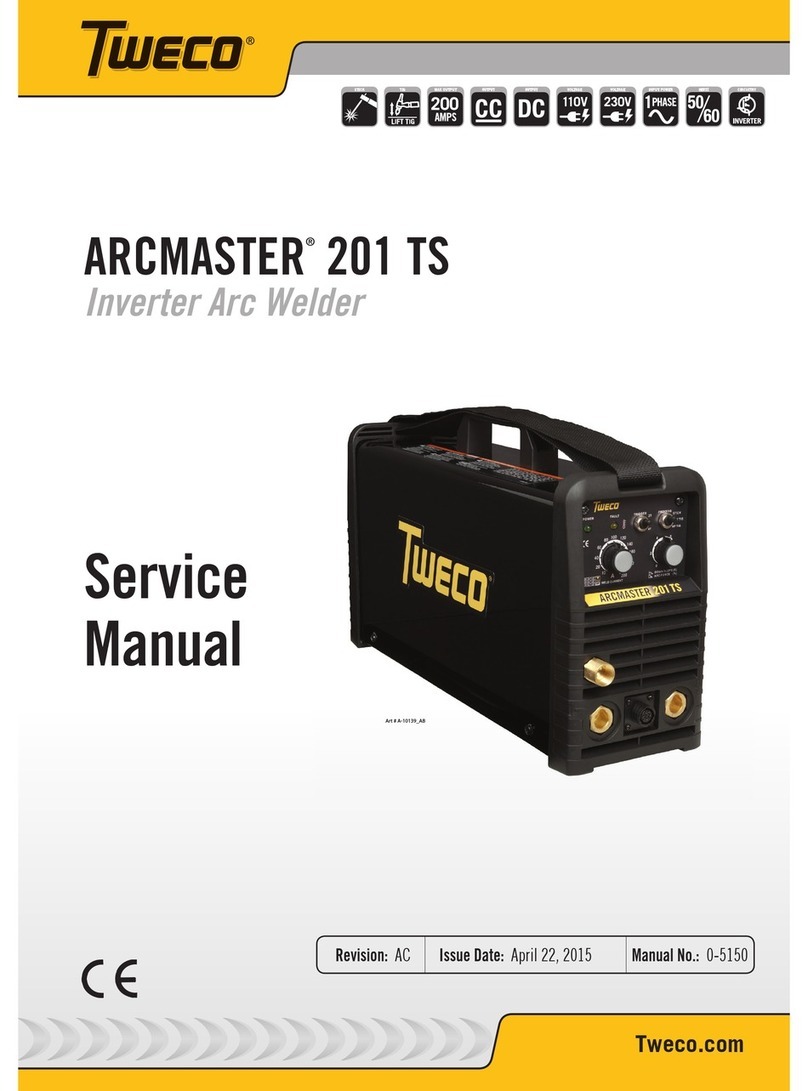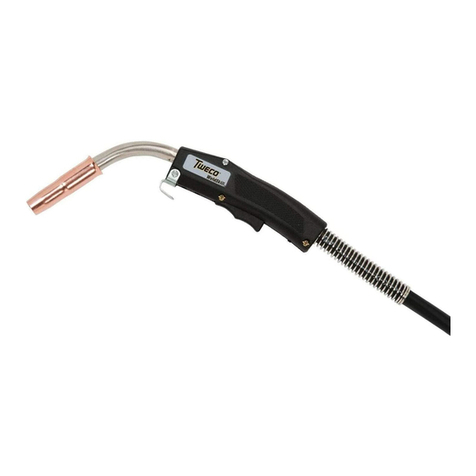SAFETY AND OPERATING INSTRUCTIONS
389200009
ARC RAYS, HOT SLAG, AND SPARKS CAN INJURE EYES AND BURN SKIN
Weldingand cuttingprocessesproduceextremelocalizedheat and strongultravioletrays.Never
attempttoweld/cutwithoutafederallycompliantweldinghelmetwiththeproperlens.Anumber
12 to 14 shade lter lens provides the best protection against arc radiation. When in a conned
area,preventthereectedarcraysfromenteringaroundthehelmet.Approvedshieldingcurtains
and appropriate goggles should be used to provide protection to others in the surrounding area.
Skinshouldbeprotectedfromarcrays,heat,andmoltenmetal.Alwayswearprotectiveglovesandclothing.Allpockets
shouldbeclosedandcussewnshut.Leatheraprons,sleeves,leggings,etc.shouldbewornforout-of-positionwelding
andcutting,orforheavyoperationsusinglargeelectrodes.Hightopworkshoesprovideadequateprotectionfromfoot
burns.Foraddedprotection,useleatherspats.Flammablehairpreparationsshouldnotbeusedwhenwelding/cutting.
Wear ear plugs to protect ears from sparks. Where work permits, the operator should be enclosed in an individual
boothpainted with a lowreectivematerialsuch as zinc oxide.See safetyand operatingreferences1, 2, and3.
WELDING SPARKS CAN CAUSE FIRES AND EXPLOSIONS
Combustiblesreachedbythearc,ame,yingsparks,hotslag,andheatedmaterialscancausere
and explosions. Remove combustibles from the work area and/or provide a re watch. Avoid oily
or greasy clothing as a spark may ignite them. Have a re extinguisher nearby, and know how to
use it. Ifwelding/cutting isto bedone ona metal wall,partition, ceiling, or roof, precautionsmust
be taken to prevent ignition of nearby combustibles on the other side. Do not weld/cut containers
that have held combustibles. All hollow spaces, cavities, and containers should be vented prior to
welding/cutting to permit the escape of air or gases. Purging with inert gas is recommended. Never use oxygen in a
weldingtorch.Useonlyinertgasesorinertgasmixesasrequiredbytheprocess.Useofcombustiblecompressedgases
can cause explosions resulting in personal injury or death. Arcing against any compressed gas cylinder can cause
cylinder damage or explosion. See safety and operating references 1, 2, 5, 7, and 8.
NOISE CAN DAMAGE HEARING
Noise from the air carbon-arc process can damage your hearing.Wear protective hearing devices to
ensure protection when noise levels exceed OHSA standards. Adequate hearing protection devices
must be worn by operators and surrounding personnel to ensure personal protection against noise.
See safety and operating references 1, 2, and 6.
SAFETY AND OPERATING REFERENCES
1. Code of Federal Regulations (OSHA) Section 29, Part 1910.95, 132, 133, 134, 139, 251, 252, 253, 254
and 1000. U.S. Government Printing Oce,Washington, DC 20402.
2. ANSI Z49.1“Safety inWelding and Cutting”.
3. ANSI Z87.1“Practice for Occupational and Educational Eye and Face Protection”.
4. ANSIZ88.2.“StandardPracticefor RespiratoryProtection”. AmericanNationalStandardsInstitute,1430
Broadway, NewYork, NY 10018.
5. AWS F4.1.“Recommended Safe Practices for Welding and Cutting Containers”.
6. AWS C5.3. “Recommended Practices for Air Carbon-Arc Gouging and Cutting”. The American Welding
Society, 550 NW Lejeune Rd., P.O. Box 351040, Miami, FL 33135.
7. NFPA 51B.“Fire Prevention in Cutting andWelding Processes”.
8. NFPA-7.“NationalElectricalCode”.NationalFireProtectionAssociation,BatteryPark,Quincy,MA02269.
9. CSAW117.2.“SafetyinWelding,CuttingandAlliedProcesses”.CanadianStandardsAssociation,178Rexdale
Blvd., Rexdale, Ontario, Canada M9W 1R3.


